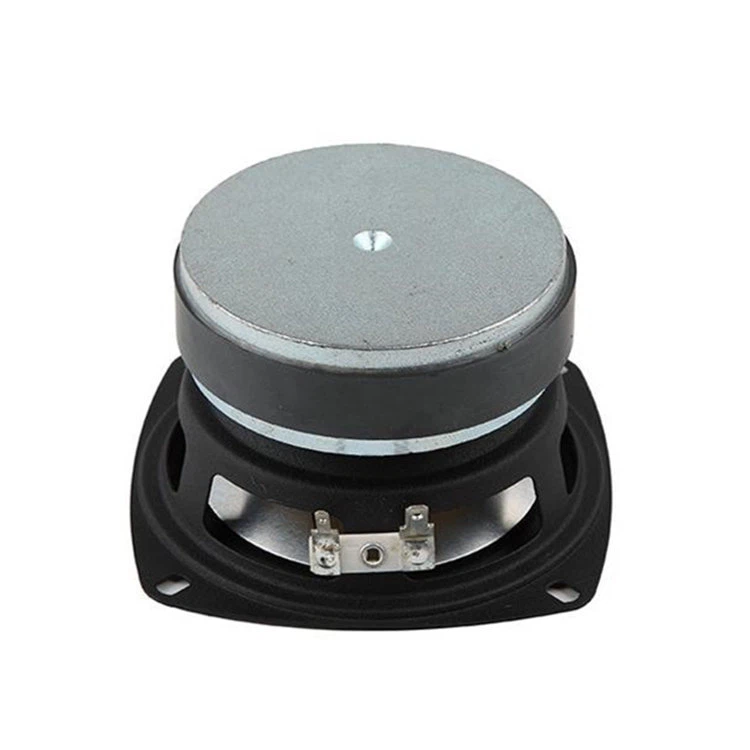What is the influence of a speaker magnet on the sound dispersion?
 Oct 28, 2025|
Oct 28, 2025| Hey there! As a speaker magnet supplier, I've spent a ton of time diving into the nitty - gritty of how these little (or sometimes not - so - little) magnets impact the sound we hear. So, let's talk about what the influence of a speaker magnet on the sound dispersion is.
First off, let's understand the basic role of a speaker magnet. In a speaker, the magnet creates a magnetic field. When an electrical current passes through the voice coil, which is placed within this magnetic field, a force is generated according to the principles of electromagnetism. This force causes the voice coil to move back and forth, and since the voice coil is attached to the speaker cone, the cone also moves. This movement of the cone is what pushes and pulls the air, creating sound waves.
Now, sound dispersion refers to how the sound spreads out in a room or space. A good sound dispersion means that the sound can be heard clearly and evenly from different angles around the speaker. And here's where the speaker magnet comes into play big time.
One of the key factors affected by the speaker magnet is the efficiency of the speaker. A stronger magnet can generally make the speaker more efficient. When a magnet is more powerful, it can generate a stronger magnetic field. This means that for a given electrical input, the voice coil will experience a greater force, and the speaker cone will move more vigorously. As a result, more sound energy is produced. And this increased energy can lead to better sound dispersion. You see, when there's more energy in the sound waves, they can travel further and spread out more easily in the environment. For example, if you're using a 10 Inch Speaker Magnet, its relatively large size often allows for a stronger magnetic field compared to smaller magnets. This can give the speaker a broader sound dispersion pattern, making it ideal for larger rooms where you want the sound to reach every corner.
Another aspect is the linearity of the speaker's movement. A high - quality magnet helps to ensure that the movement of the voice coil and the speaker cone is as linear as possible. When the movement is linear, the sound waves produced are more accurate representations of the original electrical signal. Non - linear movement can introduce distortion, which can mess up the sound dispersion. For instance, if the cone moves erratically due to a weak or inconsistent magnet, the sound waves might not spread out in a uniform way. Some frequencies could be more concentrated in one direction, while others are weaker or even missing in other areas. A well - designed magnet, like the ones in our Subwoofer Impulse Triple Magnet, is engineered to provide a stable and linear magnetic field. This helps the subwoofer to produce deep, accurate bass sounds that disperse evenly throughout the listening area.


The size and shape of the magnet also matter a great deal. Different sizes and shapes can create different magnetic field distributions. A larger magnet might have a more widespread magnetic field, which can influence how the voice coil moves across a wider area of the cone. This can lead to a more even displacement of the cone and better overall sound dispersion. On the other hand, a smaller magnet might be more suitable for a speaker where a more focused sound dispersion is desired, like in some in - ear monitors. But for larger speakers, like woofers, a bigger magnet is often preferred. Our Woofer Magnet is designed with size and shape in mind to optimize the sound dispersion for low - frequency sounds.
The type of magnet material is yet another factor. There are different materials used in speaker magnets, such as ferrite, neodymium, and alnico. Ferrite magnets are relatively inexpensive and have good magnetic properties. They can provide a stable magnetic field that contributes to decent sound dispersion. Neodymium magnets, on the other hand, are extremely strong for their size. They can create a very powerful magnetic field, which can enhance the efficiency and sound dispersion of the speaker. However, they are also more expensive. Alnico magnets have a unique sound characteristic due to their magnetic properties. They can give a warm and rich sound, and their magnetic field can influence the sound dispersion in a way that some audiophiles really love.
In addition to these factors, the way the magnet is assembled within the speaker also affects sound dispersion. If the magnet is not properly centered or if there are any gaps or misalignments, it can cause uneven movement of the voice coil and cone. This will result in an uneven sound dispersion pattern. Manufacturers need to pay close attention to the assembly process to ensure that the magnet is placed correctly and that the entire speaker system is in harmony.
Let's take a real - world example. Imagine you're setting up a home theater system. You want the sound to be immersive, with clear dialogue, rich music, and powerful bass. If you choose speakers with high - quality magnets, you're more likely to achieve this. The sound will spread out evenly in the room, creating a surround - sound effect that makes you feel like you're in the middle of the action. Whether you're sitting in the front row or off to the side, you'll be able to enjoy a consistent and high - quality audio experience.
Now, as a speaker magnet supplier, I know that getting the right magnet for your speaker is crucial. Different applications require different types of magnets. If you're building a small bookshelf speaker, you might need a different magnet than if you're designing a large - scale concert speaker. That's why we offer a wide range of speaker magnets, from small and compact ones to large and powerful ones.
If you're in the business of making speakers or if you're a DIY audio enthusiast looking for the best magnets for your project, I encourage you to reach out. We can help you find the perfect speaker magnet that will optimize the sound dispersion of your speakers. Whether you need a 10 Inch Speaker Magnet for a big - room setup, a Subwoofer Impulse Triple Magnet for deep bass, or a Woofer Magnet for your low - frequency needs, we've got you covered. Let's work together to create speakers that sound amazing from every angle!
References:
- Everest, F. A. (1994). The Master Handbook of Acoustics. McGraw - Hill.
- Beranek, L. L. (1954). Acoustics. American Institute of Physics.

